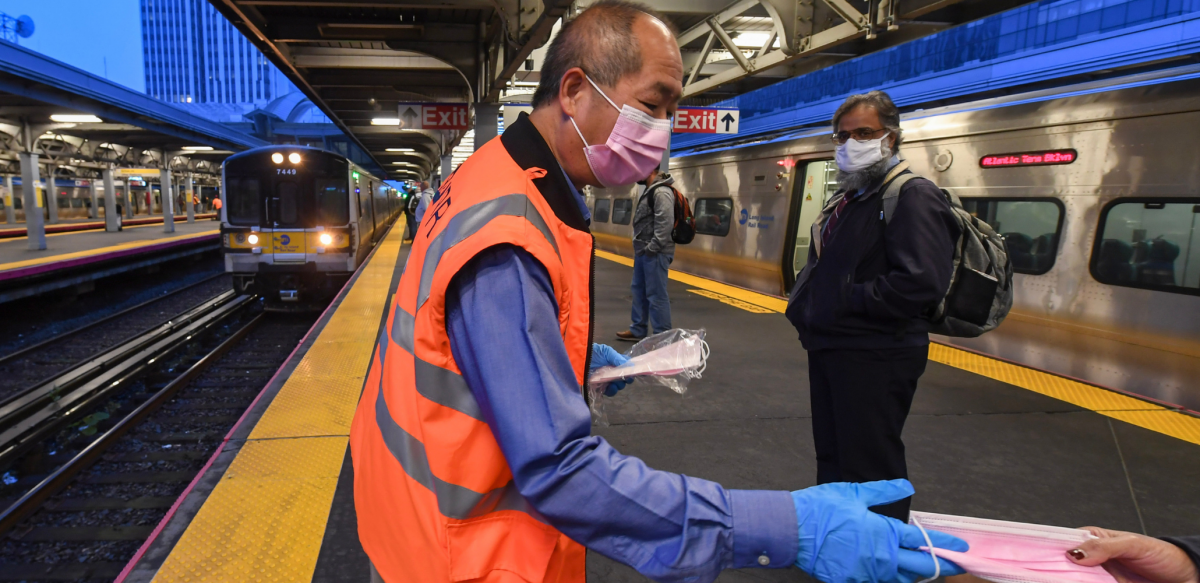Viewpoint: Don’t Count on New York Unions to Stop the Cuts

With ridership down, the city's transit agency is billions of dollars in the red. The leaders of New York's unions aren't going to lead a real fight against austerity—but that doesn't mean the members themselves won't fight. Photo: Metropolitan Transportation Authority of New York (CC BY 2.0)
In his article "With City's Economic Future in Doubt, Can New York Unions Stop the Cuts?," Chris Maisano analyzes the looming effects of the pandemic on public workers and the services they provide in New York City. The city has cut $5 billion from its budget, with accompanying cuts to services and the workforce. Twenty-two thousand more workers could be laid off if the municipal unions don’t come up with $1 billion in givebacks. Budget cuts like these that decimate jobs and services in the public sector extend well beyond those in NYC’s budget.
Ridership on the city’s subways and buses, as well as two regional commuter lines, plummeted starting in March. Although it has recovered some, it is still more than 50 percent lower than it was a year ago. As a result, the MTA, the agency that runs the region’s transit, is billions of dollars in the red. It is planning to cut service and lay off up to 8,000 workers. Cuts at the City University of New York, where New York Governor Andrew Cuomo withheld 20 percent of the state’s financing, will add thousands more layoffs. You get the picture.
The federal money many were hoping against hope for isn’t coming. Maybe next year if Biden is elected, but maybe not. There is increasing support in New York for raising taxes on the wealthy—but Cuomo opposes it. This issue will be fought over once the state legislature reconvenes, but that’s likely not until next year. And, even if approved by the legislature and passed over Cuomo’s veto, any increase in tax collections in future years won’t prevent layoffs in the coming months.
Maisano thinks that NYC’s municipal unions should be leading the fight against austerity—but he’s not holding his breath. As he points out, “New York’s municipal labor movement is, with some notable exceptions, hidebound and risk-averse.” True, but the fact the leadership of the city’s unions is unwilling or unable to lead a real fight against austerity does not mean that the members of those unions are unwilling to fight for their jobs and the services they provide.

SUPPORT LABOR NOTES
BECOME A MONTHLY DONOR
Give $10 a month or more and get our "Fight the Boss, Build the Union" T-shirt.
In the 1970s, when the union leaders failed to hold the line against layoffs and other cuts, members in many unions took up the fight. They formed caucuses and coalitions. They organized demonstrations and job actions. And in one union, Transport Workers (TWU) Local 100, they forced the leadership to call a strike in 1980. Most of these membership groups didn’t last long and they didn’t stop austerity in the city (although the strike did enable transit workers to regain some of what they had lost and stop further cuts for a brief time). Those that did last built up membership power to act on the job. And they posed a threat to the hide-bound and risk-averse leadership of their unions for several years.
As Maisano points out, this process of members fighting back is already unfolding in New York City’s teachers’ union, the United Federation of Teachers. Perhaps the “notable exceptions” among the city’s labor leadership, along with Labor Notes and groups such as the Movement of Rank-and-File Educators (MORE) in the UFT, can initiate a union-based anti-austerity coalition to organize the fight against the coming layoffs and cuts; to push those union leaders who can be pushed; and to build a broader movement alongside community groups, environmental justice organizations, transit advocates, and others, “…to articulate a different vision for the city as a whole…” as Maisano calls for at the end of his article.
Steve Downs is a retired New York City subway train operator and TWU Local 100 officer.





